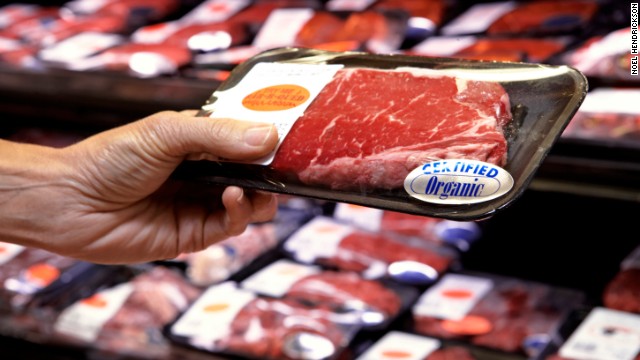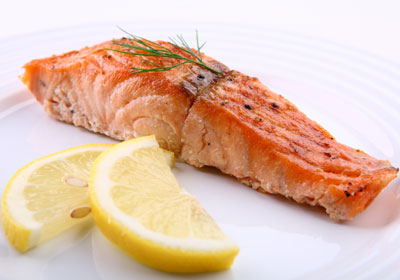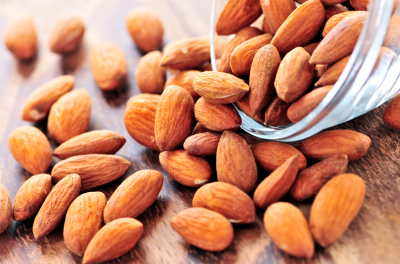Could it really be that simple? Cut back on red meat consumption to reduce Type 2 Diabetes.

JAMA Internal Medicine recently published a study on Red Meat Consumption and Type 2 Diabetes Risk. This study is extremely relevant as there are 25.8 million people in the United States, or 8.3% of the population (only 5% have Type 1), who have diabetes.1
And another nearly 80 million are in a pre-diabetic stage.
So it makes sense that researchers would want to find out more on the prevention of this condition. Researchers evaluated the association between changes in red meat consumption during a 4-year period and subsequent 4-year risk of type 2 diabetes mellitus in US adults. These three studies adjusted for factors like age, family history, race, initial red meat consumption, physical activity and diet quality.2
Reduce Your Risk
What was striking about the results was how a slight increase in meat consumption could dramatically change the risk. Compared with the reference group of no change in red meat intake, increasing red meat intake of more than a half serving per day was associated with a nearly 50% elevated risk in the subsequent 4-year period.2
But the results also seemed to support the positive effects of meat reduction. During the research, the study found further evidence that limiting red meat consumption over time could aid in Type 2 Diabetes prevention.
Currently, the recommended amount of meat consumed per day is about is between 3 and 5 oz per which is about 7g of protein per ounce. But Americans often consume much more than that recommended amount.3
In 2000, total meat consumption (red meat, poultry, and fish) reached 195 pounds per person. That is is 57 pounds above average annual consumption in the 1950s!
Americans are eating more meat overall all. Each American consumed an average of 7 pounds more red meat than in the 1950s, 46 pounds more poultry, and 4 pounds more fish and shellfish. The CDC reported that since 1990, the prevalence of diagnosed diabetes in the United States has risen sharply among all age groups, both sexes, and all racial/ethnic groups. 4
So what happened?
Higher consumer incomes, from the increase in two-income households, coupled with the lowest prices in meat in 50 years in the 1990s contributed to the increase in meat consumption. And over the years, the meat industry marketed value and convenience products like pre-packaged meats to the ever-time crunched consumer.5
So now that we know better will we make the change? Are we willing to take measures to contribute to long term health benefits and prevention of deadly diseases?
Other Non-Red Meat Options:
Soy: Soy contains protein, isoflavones, and fiber, all thought to provide health benefits. Soy from tofu or tempeh is an excellent source of dietary protein, including all essential amino acids.
Lentils and Beans: Are high in protein and fiber and low in fat, which makes them a healthy substitute for meat. They’re also packed with foliate, iron, phosphorus, potassium and fiber.
Quinoa: This grain is a source of high-quality protein, as it contains all the essential amino acids.
Salmon: Salmon is a good source of omega-3 fatty acids, which help keep blood from forming clots and protect against irregular heartbeats that may cause a heart attack.
Almonds: Contain fiber, riboflavin, magnesium, iron and calcium. In fact, one serving (about seven almonds) has more calcium than any other type of nut — 22 milligrams.
Eggs: Protein packed, but one large egg has 186mg of Cholesterol. Consider substituting servings of vegetables for servings of meat, or avoid high-fat dairy products for that day.
Read more: Vegetarians May Live Longer
References:
Changes in Red Meat Consumption and Subsequent Risk of Type 2 Diabetes Mellitus 2
Sources:
http://www.mayoclinic.org/news2010-mchi/5781.html
http://www.riversideonline.com/health_reference/Questions-Answers/AN01640.cfm
http://www.mayoclinic.org/news2010-mchi/5781.html
http://www.mayoclinic.com/health/healthy-recipes/RE00145
http://www.mayoclinic.com/health/health-foods/MY01108&slide=2








Recent Comments